Not all evergreens are conifers; some are broad-leaved. Trees in southern regions tend to hold on to their foliage, broad-leaved as they are. These include trees such as live oak and Southern magnolia. Live oak (Quercus virginiana) is native to coastal areas of Virginia and North Carolina and south along the Atlantic and Gulf coasts. Adaptable to both sand and clay soils, it tolerates salt spray, wind and can handle periodic flooding. You’ll recognize the tree for its broad spreading limbs, sometimes draping gray Spanish moss. Much like Southern magnolia, it has leathery leaves with downy undersides, which are adaptations to adverse conditions by slowing water loss from the leaf surface.
Southern magnolia (Magnolia grandiflora) has very large leathery leaves, which are glossy above and reddish to cinnamon below. It is a coarse textured tree. As the name suggests, it does best in the warmer zones (7 to 10). Southern magnolia prefers moist soils and some shade. Grow as a specimen tree, but give it room. In summer, it produces (as the species name, “grandiflora” implies) large white blooms.
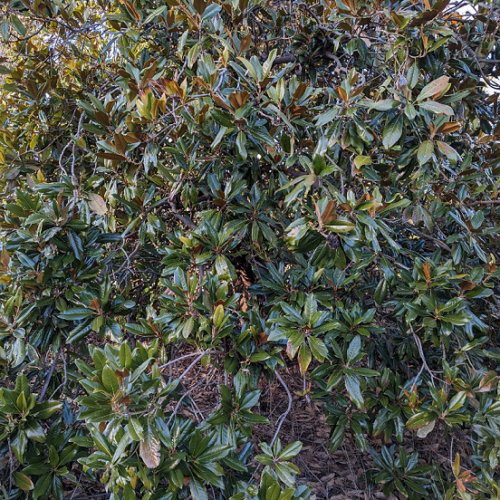
Not all broad-leaved plants are trees. Many broad-leaved plants that retain their foliage in winter include Rhododendron, Oregon grape-holly, and cherry laurel to name a few.
Rhododendrons form a large group of evergreen and deciduous plants. From large leaved, tall species (Rhododendron catawbiense, R. maximum) to shrubs with minute leaves (R. periclymenoides) and stature (R. minus), much hybridization and selection has occurred in the group’s horticultural history. Think of the large leaved varieties presenting coarse textures in the landscape, whereas those with smaller leaves are medium to fine textured in appearance. Naturalistic plantings incorporate both. Rhododendron prefer moist, well-drained acidic soils. Plant in partial shade, with lots of humus. How does Rhododendron cope with the cold? It has leathery leaves which droop and roll into itself during the worst of it; unfolding and becoming upright in more favorable conditions, sometimes showing tell-tale evidence of a burned stripe down the middle.
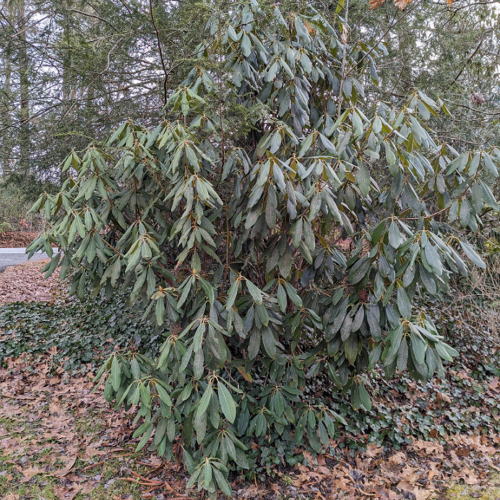
Oregon grape-holly, a member of the barberry family is also referred to as Oregon grape, Grape holly, and Holly grape. It produces yellow flowers in spring followed by clusters of blue grape-like fruits, which are edible. As one might guess, the foliage has spines, though its association to holly is merely coincidental. The spiny foliage emerges bronze-red, turning green as it matures. Plant in partial shade, in soils enriched with compost. Oregon grape prefers moist, well-drained soil. It is rare in the landscape, and deserves wider consideration.
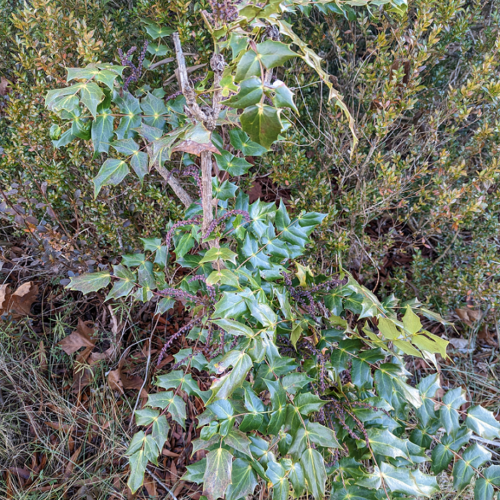
By contrast, the more familiar holly, members of the Aquifoliaceae, are evergreen and spiny, but not always. American holly (Ilex opaca) is dioecious, that is, there are male and female plants. As such, and try as you might, you will not get red berries from a male holly. Conversely, without a male nearby, neither will you get any fruit on a female! In contrast, Japanese holly (Ilex crenata) has minute evergreen foliage, may be planted in the landscape as an alternative to boxwood, as it makes a similar appearance, except if you look close at the leaf margins, you will see miniature spines, identifying it as holly. Tolerant of partial shade, plant holly in moist, well drained, slightly acidic soil. American and English hollies are medium textured, whereas Japanese holly is a fine textured plant in the landscape. Add in compost when planting and mulch well. Protect them from winter winds, they do better in mild climates.
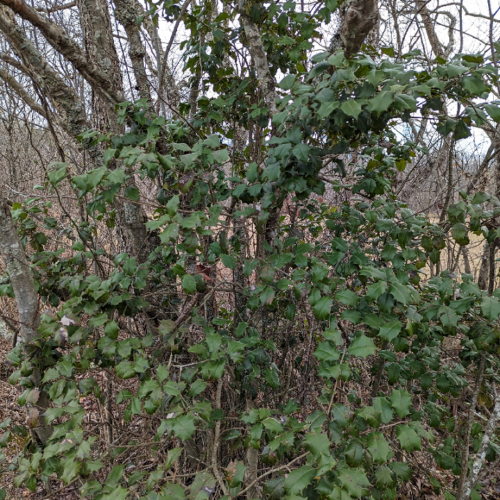
Boxwood (Buxus sempervirens), like Japanese holly, is an evergreen with rich, dark foliage that lends itself to more formal plantings. Use them as a low garden border or hedge, they lend themselves to shearing. Keep them healthy by planting in well-drained soil, rich in organic matter. Mulch plants and protect them from extreme drought. They do well in partial shade to full sun.
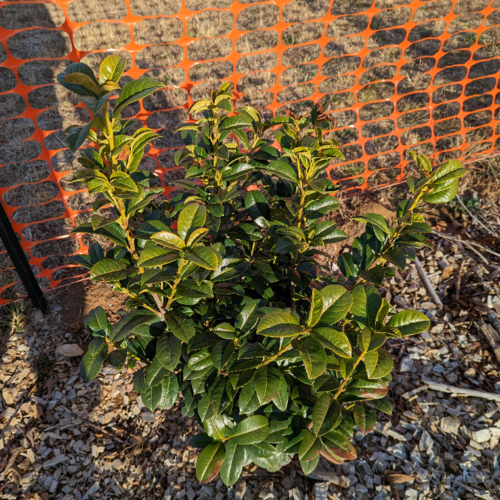
And a few evergreens are quasi-parasitic on trees, such as mistletoe. Mistletoe infects a number of tree species, penetrating the vascular tissues with a root-like structure termed, a haustorium. Interestingly, fungi invade their hosts using such structures to absorb nutrients, mainly plant sugars. The haustoria connect one species with the other. In the case of mistletoe, it is a one-way relationship, where it is able to absorb water and minerals from the host, returning nothing. In contrast, beneficial fungi use haustoria to exchange water and minerals for sugars from the host plant. Examples are the mycorrhizal associates of trees. The mistletoe was a symbol of love and was thought to protect the household against evil in ancient times. Not totally evil, birds will eat their red berries, and will at times, nest in them.
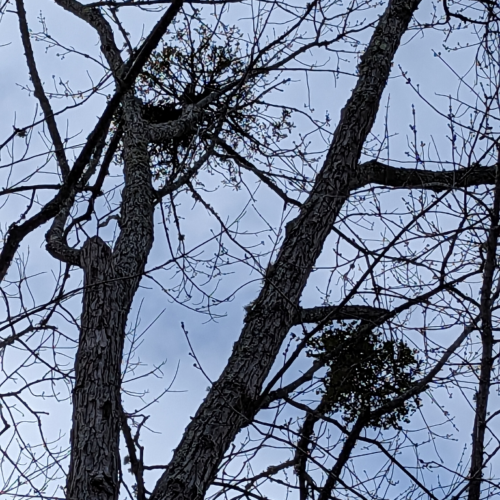
Both conifers and evergreens have an amazing capacity to thrive in adverse winter conditions. Consider some of these species in your planting designs: they offer foliar interest, privacy screening, homes to wildlife, and have become important part of our winter celebrations!
~ Signing off for now, Joe
